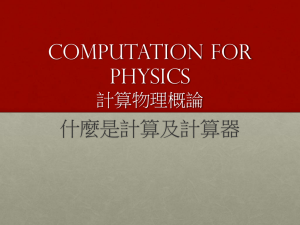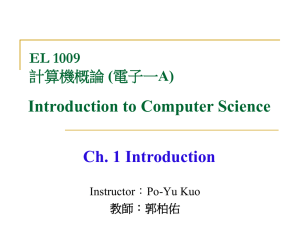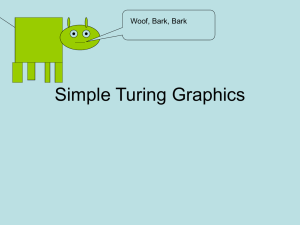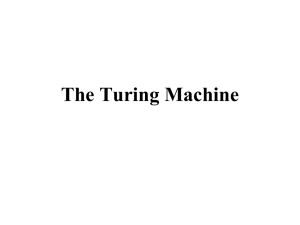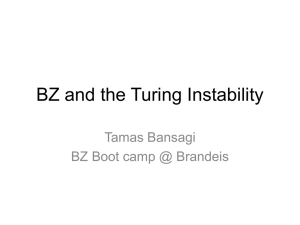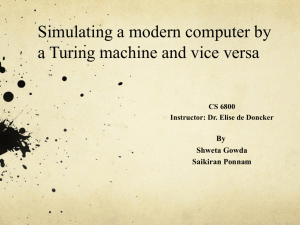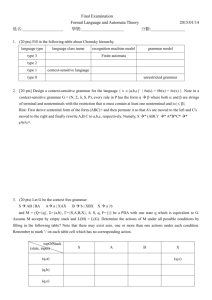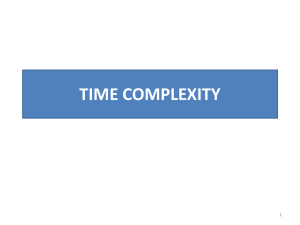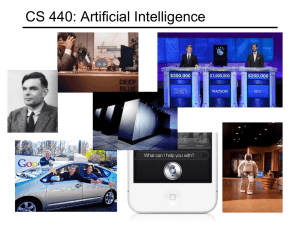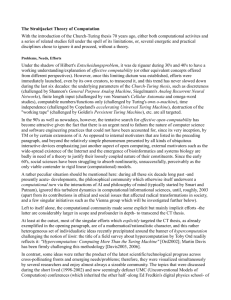Church - SUNY, Stony Brook
advertisement
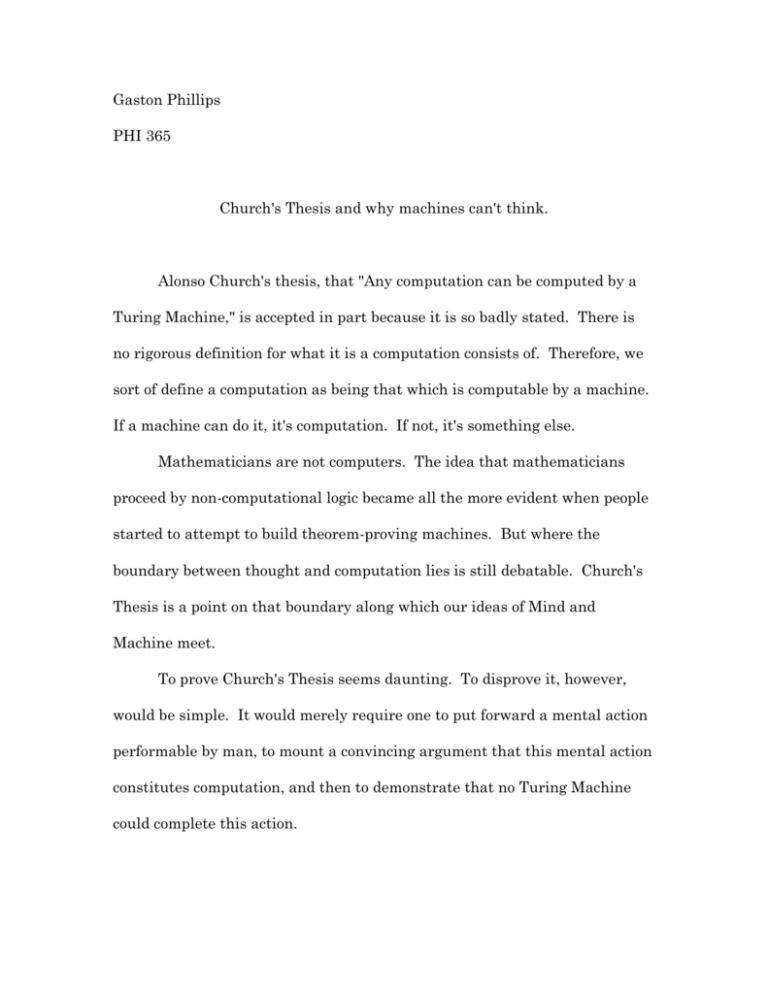
Gaston Phillips PHI 365 Church's Thesis and why machines can't think. Alonso Church's thesis, that "Any computation can be computed by a Turing Machine," is accepted in part because it is so badly stated. There is no rigorous definition for what it is a computation consists of. Therefore, we sort of define a computation as being that which is computable by a machine. If a machine can do it, it's computation. If not, it's something else. Mathematicians are not computers. The idea that mathematicians proceed by non-computational logic became all the more evident when people started to attempt to build theorem-proving machines. But where the boundary between thought and computation lies is still debatable. Church's Thesis is a point on that boundary along which our ideas of Mind and Machine meet. To prove Church's Thesis seems daunting. To disprove it, however, would be simple. It would merely require one to put forward a mental action performable by man, to mount a convincing argument that this mental action constitutes computation, and then to demonstrate that no Turing Machine could complete this action. The Halting Problem, which Turing himself proved, demonstrates one thing which it is certain that no Turing Machine can do: no Turing Machine can be built which, when fed the description of any other Turing Machine and any input for said machine, will report on whether or not the machine will reach a Halt State. However, human beings can. Take any arbitrary Turing Machine's description. It will, by definition, consist of a finite number of states, and a finite number of paths between these states. It will also describe an alphabet of symbols - most often a binary alphabet, but not necessarily so. The alphabet, however, is also finite, with an arbitrary number of characters. The machine is to be started on an input tape. That machine, if it does not halt, is performing certain actions repeatedly. It is in a loop. There is a number of possible actions the machine can take, a highest bound after which it must be in a loop. That number, which is finite, can be computed by multiplying the factorial of the number of states by the factorial of the number of characters in the alphabet by the factorial of the length of the input. It may be that some other factor must be considered to generate the number. In any case, by multiplying together the finite bounds that limit the complexity of the machine, an upper bound of possible moves can be generated. You probably need to add a one to each number in case you start it on an empty input, so a zero input doesn't make the result zero. It doesn't matter if the number is too large by orders of magnitude. All that matters is that the number will necessarily be finite. Imagine a machine built to do the following: 1. Read the machine-description and input fed to it. 2. Calculate the large number of that machine. 3. Run the machine for that large number of steps. 4. Report '1' if the machine is in a halt state, and '0' if it is not. Such a machine could be built. All the steps it takes are clearly computational. But the result of such a machine's existence is a logical paradox, as evidenced by the proof of the Halting Problem. So, something in the description of the machine must have been illegal, and not, in fact, performable by a Turing Machine. The only possible misstep was assuming the machine would know how long its input was. In his description of the Turing Machine, Turing described it as only reading one piece of input at a time. Therefore, the limit on computation preventing a Turing Machine from ever solving the Halting Problem can succinctly be summed up as follows: No Turing Machine can never know the length of the input it is being fed. In other words, a Turing Machine which is trying to decide if another machine, which halts only when reading a 1, will halt when fed an infinite series of zeroes, cannot say no. It can't distinguish between an infinite series of zeroes and a string of a million zeroes followed by a one. Or even a single zero followed by a one. The machine built to predict if another machine would halt is, indeed, possible. But it would require three inputs instead of two. It would need to be fed (1) the description of another machine, (2) the machine's input, and (3) the length of the input. The third, probably, before the second. But doing this reduces the Turing Machine from A.I. to abacus, and the onus of 'thought' returns to the operator. It seems profound that something as simple as calculating the length of an input string would be beyond a Turing Machine's capacities. But, at the same time, it makes sense that the difference between a Turing Machine and a Human Brain should be something so simple. Turing Machines, because they can only read one piece of input at a time, can never understand. In Gödel, Escher, Bach, Douglas Hofstadter demonstrates the human ability to understand formal systems in two ways. First, he explains a system where the reader is asked to proceed from MI to MU by formal rules. It is impossible to do so, and most readers catch on quickly to the fact that their proofs are going nowhere. Second, he explains another formal system and asks the reader to perform various proofs with it. The reader, again quickly, recognizes that he is essentially performing addition and subtraction. The difference here, between the human approach and the Turing Machine approach, can be understood loosely in terms of the metaphor/metonymy distinction (loosely in terms of, as opposed to understood loosely). Metaphor and Metonymy, in this sense, are defined as follows. Metaphoric moves are horizontal and planar, linking objects syntactically. Metonymic moves are vertical, and take as their objects systems of grammar and relations between thoughts. A human, faced with a syntactic grammar, naturally tries to create an isomorphism to a grammar with which he is familiar. Translation between languages, then, is among the most basic human instincts. The human mind grasps the grammar, as a grammar, and proceeds by metonymy to understand the limits of the grammar. In other words, humans understand and think and know because the syntax of their grammar is an object of their understanding. Machines have no such innate ability for abstraction and, if Church's Thesis holds, they can never be built with one. Machines know their grammars only in as much as it is described in their programming. And so, denied the human capacity to move vertically out of a system of grammar and to apprehend its rules and boundaries, machines are also denied the human capacity to understand the contents of that grammar.


